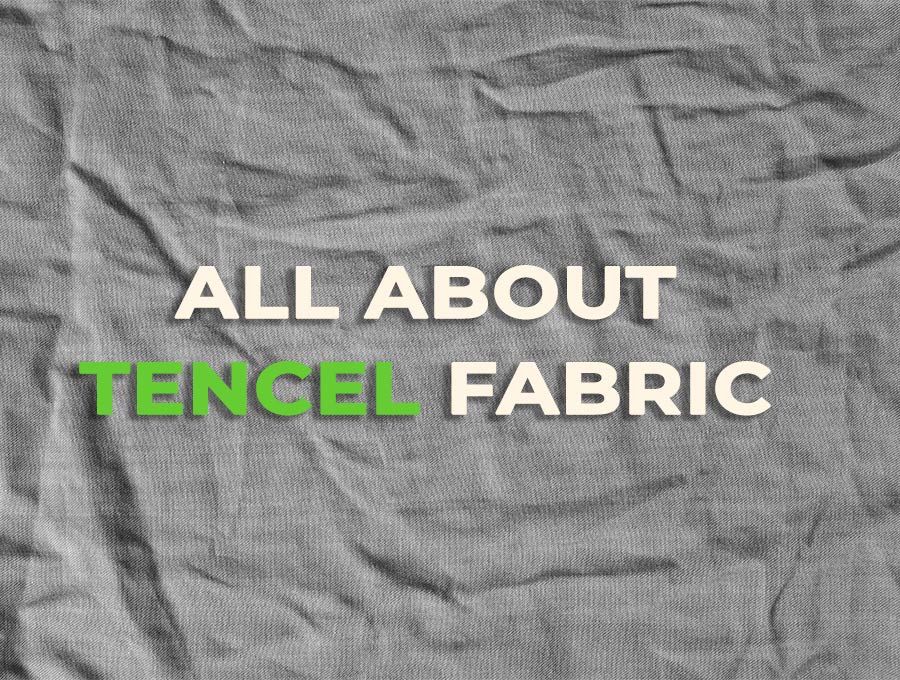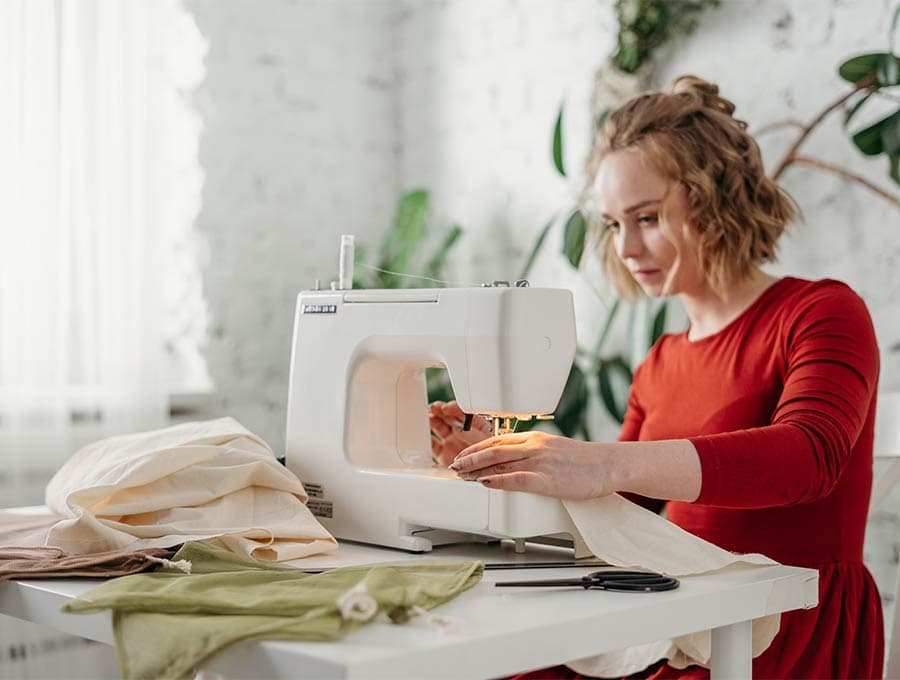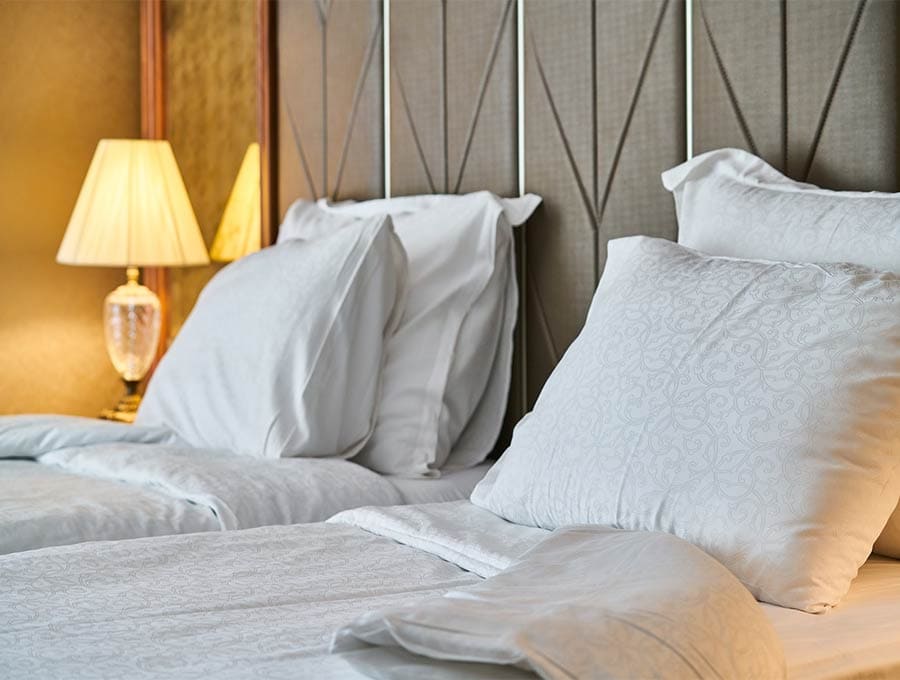What is Tencel – Fabric Use and Care
Table of Contents
What is Tencel?
Tencel is a cellulose fiber that is derived from wood pulp. The name Tencel is trademarked and owned by Lenzing, a large Austrian textile company have made it their mission to find sustainable solutions while at the same time offering their customers top quality fabric.
Why use Tencel instead of cotton?
Tencel has a variety of benefits over other fabrics, including being more absorbent than cotton, softer than silk, and cooler than linen. It is also resistant to wrinkles and static, making it a low-maintenance fabric. It has a high wet strength making it more resistant to shrinkage than other fibers.
What impact does Tencel have on the environment?
Tencel production requires significantly less water and energy than other fabrics such as cotton. Did you know that to produce one cotton bed sheet it’s been calculated that 2,576 gallons (9,750 liters) of water is used. On the other hand the eucalyptus trees mainly used for the Tencel lyocell wood pulp, do not require as much water or as many pesticides compared to cotton. The trees grow in warm climate so tend to grow faster than temperate forests.
According to Lenzing’s website “Tencel fibers are certified fully compostable and biodegradable in natural and industrial environments, including soil, compost, fresh, and marine water.”. Tencel, the company’s first carbon neutral fiber was launched in September 2020. The wood pulp used in the production of the fabric is sourced from sustainably managed forests and the fiber is processed using an eco-friendly closed loop system, making it a sustainable and environmentally friendly fabric. The end result is a fabric that has a much lower impact on the environment than other fabrics.
Benefits of Tencel
Tencel offers a number of benefits over other fabrics:
- More absorbent than cotton: Tencel fibers are more absorbent than cotton fibers, meaning that they can absorb more moisture from the skin. This makes Tencel ideal for use in clothing such as underwear and sportswear where moisture needs to be quickly drawn away from the body.
- Softer than silk: The fibers of Tencel are very fine, resulting in a fabric that is softer than silk. This makes Tencel ideal for use in clothing such as lingerie and nightwear where a soft fabric is desired.
- Cooler than linen: Tencel’s moisture wicking ability is better than that of linen, meaning that it can draw moisture away from the body more effectively. This makes Tencel ideal for use in hot weather or in active wear where you are likely to perspire.
- Resistant to wrinkles and static: Due to the way that Tencel fibers are bonded together, the fabric is resistant to wrinkles and static. This makes Tencel low-maintenance compared to other fabrics such as wool which require regular ironing or steaming to prevent creases.
How is Tencel made?
The wood pulp used to make Tencel comes from sustainably managed forests where new trees are planted to replace those that are harvested. Once the wood pulp has been sourced, it is processed using an eco-friendly closed loop system which recycles water and chemicals, eliminating waste and pollution. The end result is a cellulose fiber that can be used to make a variety of different fabrics. The wood chips are soaked in a non-toxic amine oxide solution to break the chips down into a paste. The paste then goes through a machine under high pressure to form it into threads. The threads then go through various processes to create the yarn used to weave the fabric.
Alternatives to Tencel – VISCOSE VS MODAL VS LYOCELL
Although Viscose rayon, Modal and Lyocell fabrics are also manufactured from wood pulp, they have been around longer. Tencel has been engineered to address the problems people had with other wood pulp fabrics.
- Rayon can shrink and lose its shape after a number of washes but the high wet strength of Tencel means that shrinkage and loss of shape are no longer an issue of concern.
- Modal fabric production requires chemically-intensive processes and the chemicals used can harm the environment and the people involved in the production process. Some of the chemicals that may be used in modal production include caustic soda, carbon disulphide, sulphuric acid and sodium hydroxide.
- Lyocell is the third generation of fabrics created from cellulose derived from wood pulp and while it isn’t a natural fabric, its impact on the environment is much lower compared to other synthetic fibers as sodium hydroxide isn’t used during the manufacturing process. Tencel is a type of Lyocell. To make Lyocell N-Methylmorpholine N-oxide (NMMO), commonly known as amine oxide and water are used. NMMO is considered non-toxic.
- A Lyocell brand that also reduces the environmental impact of textile production uses sustainably sourced dried seaweed. The fabric is known as Seacell and is produced by a German company called Smartfiber, which claims that the fabric is rich in anti-oxidants and vitamins, is skin-friendly and is fully biodegradable and compostable. The textile industry has come a long way in producing more environmentally friendly fabrics which rival the best of natural fabrics in their comfort, luxurious soft feel, moisture wicking ability and versatility.
Sewing with Tencel
Tencel fabric is a great choice for sewing projects because of its smooth, lightweight texture, strength and breathability. It’s also easy to work with.
Here are some tips for sewing with Tencel fabric:
- Pre-wash your fabric before starting your project; this will help remove any sizing or finishes that may be on the fabric and make it easier to sew.
- Use a sharp needle when sewing with Tencel fabric as the fibers can be slippery and require extra strength to penetrate them while sewing.
- Choose a lighter weight interfacing if needed. Tencel does not need heavy interfacings like fusibles or iron-on weft interfacings, which can make the garment look bulky.
- If you are not using a serger (overlocker) then consider using French seams if you’re looking for a more tailored finish; these neat seams that don’t show any raw edges on the inside of your project and provide a neat finish.
Tencel fabric FAQs
Q: Are Tencel sheets better than bamboo sheets?
A: It really depends on preference as both types of sheet fabrics have their own unique benefits. Generally speaking, bamboo sheets have an ultra-soft feel due to their silky smooth texture whereas Tencel sheets have an incredibly lightweight feel that helps keep you cool throughout warm nights while bamboo sheets offer a heavier feel that’s ideal for cooler weather. Bamboo sheets tend to be naturally resistant to bacteria and odors. Tencel sheets on the other hand are known for their absorbency which helps wick away moisture from your skin while sleeping. Did you know that the average person sweats out 25ml per hour when sleeping under temperate conditions – that’s at about 85 degrees F. Over 8 hours of sleep you’ll be producing around 200ml of sweat. And the amount goes up in warmer climates. Ultimately it comes down personal preference as both types of fabrics offer great comfort and performance levels when it comes to bedding materials.
Q: Is Tencel good for hot weather?
A: Yes, Tencel is ideal for hot weather because its fibers are highly breathable and absorb moisture quickly. This helps keep you cool and dry throughout the night. Additionally, Tencel has a low thermal conductivity rate which helps to keep body temperature regulated in hot weather.
Q: Does Tencel shrink when washed?
A: Generally speaking, Tencel does not shrink when washed with cool water and tumble dried on a low heat setting. However, if you choose to machine-wash your Tencel sheets on a high heat setting, they may shrink slightly due to the intense heat of the water and dryer. To minimize any potential shrinking, it’s recommended that you wash your Tencel sheets in cold water on a gentle cycle and line dry them instead of using the dryer.
Q: How long do Tencel sheets last?
A: On average, high-quality Tencel sheets can last up to five years or more with proper care and maintenance. However, this largely depends on how often they are used and how well they are cared for. If you take good care of your Tencel sheets by washing them regularly according to the manufacturer’s instructions, then they should last longer than average.
A number of eco-conscious clothing brands have embraced the use of Tencel for their quality conscious slow-fashion, among these companies are Amour Vert, La Relaxed, Paneros, Allbirds, and Tentree. Colioco does a range of lingerie, underwear and swimwear. Join the innovators and use Tencel for your sewing projects. If you enjoyed reading all about Tencel fabric, one of the newest additions to the fabrics available for sewists, then please share this article with other sewing enthusiasts. Do subscribe to have articles and sewing projects delivered straight to your inbox so you never miss out on our easy projects with step-by-step instructions and video tutorials.






